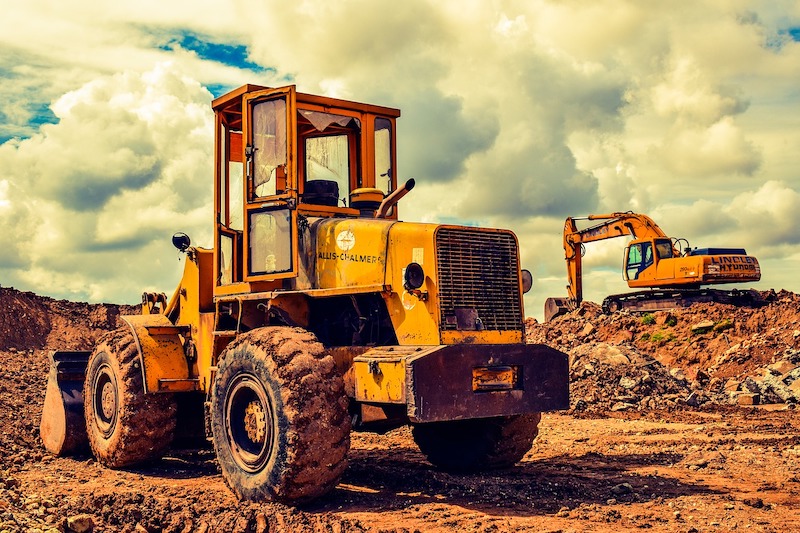Thirty-nine percent of contractors report that project owners have halted or canceled current construction projects amid deteriorating economic conditions, according to a survey released today by the Associated General Contractors of America. Association officials warned that these cancellations mean massive job losses are likely soon unless Congress passes targeted recovery measures to boost infrastructure funding, compensate firms for lost or delayed federally funded work and provide needed pension relief. The project cancellations are particularly severe in light of new data showing that 42 states added construction jobs through February.
“The abrupt plunge in economic activity is taking a swift and severe toll on construction,” said Ken Simonson, the association’s chief economist, noting that only 18% of respondents have been ordered to halt work by elected officials. “The sudden drop in demand stands in sharp contrast to the strong employment levels this industry was experiencing just a few weeks ago.” Click here for additional video comments from Mr. Simonson.
In the association’s latest online survey, conducted between March 23 and 26, 45% of the 1,640 respondents reported experiencing project delays or disruptions. Shortages of material, parts and equipment, including vital personal protective equipment for workers such as respirators, were reported by 23% of respondents. Eighteen percent reported shortages of craftworkers, while 16% said projects were delayed by shortages of government workers needed for inspections, permits and other actions. Thirteen percent said delay or disruption had occurred because a potentially infected person had visited a jobsite.
The survey also found that 35% of firms said suppliers had notified them or their subcontractors that some deliveries would be delayed or canceled, the economist added. He noted that only 22% reported similar supply chain challenges last week. That survey was conducted between March 17-19. However, 8% of firms did report they have added new work expanding health care and other facilities needed to respond to the growing health crisis.
In contrast to the rapidly deteriorating current market conditions, the association also released new construction employment data showing that most states – 42 – added construction jobs between February 2019 and February 2020. Industry employment declined over the year in eight states and the District of Columbia. From January to February, 37 states and D.C. added construction jobs, while 11 states shed jobs and two states had no change.
Association officials warned that while the coronavirus relief measure scheduled for a vote in the House today will provide some immediate help for construction workers and their employers, Congress must do more to protect high-paying construction jobs. They said new investments in infrastructure, relief from losses incurred on delayed or canceled federally funded projects and protections for multi-employer pensions will help the industry recover from the economic impacts of the pandemic.
“The steps firms are taking to protect workers from the coronavirus unfortunately won’t be enough to save many of them from the economic damage the pandemic is creating,” said Stephen E. Sandherr, the association’s chief executive officer. “Construction workers and employers need more than a lifeline, they need a recovery plan.”
View the state employment data, rankings, and map. View AGC’s coronavirus resources and survey.
Related Stories
Healthcare Facilities | Sep 8, 2023
Modern healthcare interiors: Healing and care from the outside in
CO Architects shares design tips for healthcare interiors, from front desk to patient rooms.
Codes and Standards | Jul 19, 2023
Office leasing in major markets by financial services firms rebounds to pre-pandemic norms
Though the pandemic led to reductions in office leasing by financial services firms in gateway markets, a recent report by JLL found a notable leasing resurgence by those firms.
Multifamily Housing | Jun 29, 2023
5 ways to rethink the future of multifamily development and design
The Gensler Research Institute’s investigation into the residential experience indicates a need for fresh perspectives on residential design and development, challenging norms, and raising the bar.
Office Buildings | Jun 28, 2023
When office-to-residential conversion works
The cost and design challenges involved with office-to-residential conversions can be daunting; designers need to devise creative uses to fully utilize the space.
Arenas | May 18, 2023
How can we reimagine live sports experiences?
A Gensler survey finds what sports fans' experiences have been like returning to arenas, and their expectations going forward.
Headquarters | May 15, 2023
The new definition of Class A property
Dan Cheetham, Managing Director and Founder of FYOOG, believes organizations returning to a "hub and spoke" model could have a profound effect on properties once considered Class B.
Office Buildings | May 5, 2023
9 workplace design trends for 2023
HOK Director of WorkPlace Kay Sargent and Director of Interiors Tom Polucci discuss the trends shaping office design in 2023.
Multifamily Housing | Apr 4, 2023
Acing your multifamily housing amenities for the modern renter
Eighty-seven percent of residents consider amenities when signing or renewing a lease. Here are three essential amenity areas to focus on, according to market research and trends.
Urban Planning | Mar 16, 2023
Three interconnected solutions for 'saving' urban centers
Gensler Co-CEO Andy Cohen explores how the global pandemic affected city life, and gives three solutions for revitalizing these urban centers.
Laboratories | Mar 9, 2023
5 laboratory design choices that accelerate scientific discovery
Stephen Blair, director of CannonDesign's Science & Technology Practice, identifies five important design strategies to make the most out of our research laboratories.

















